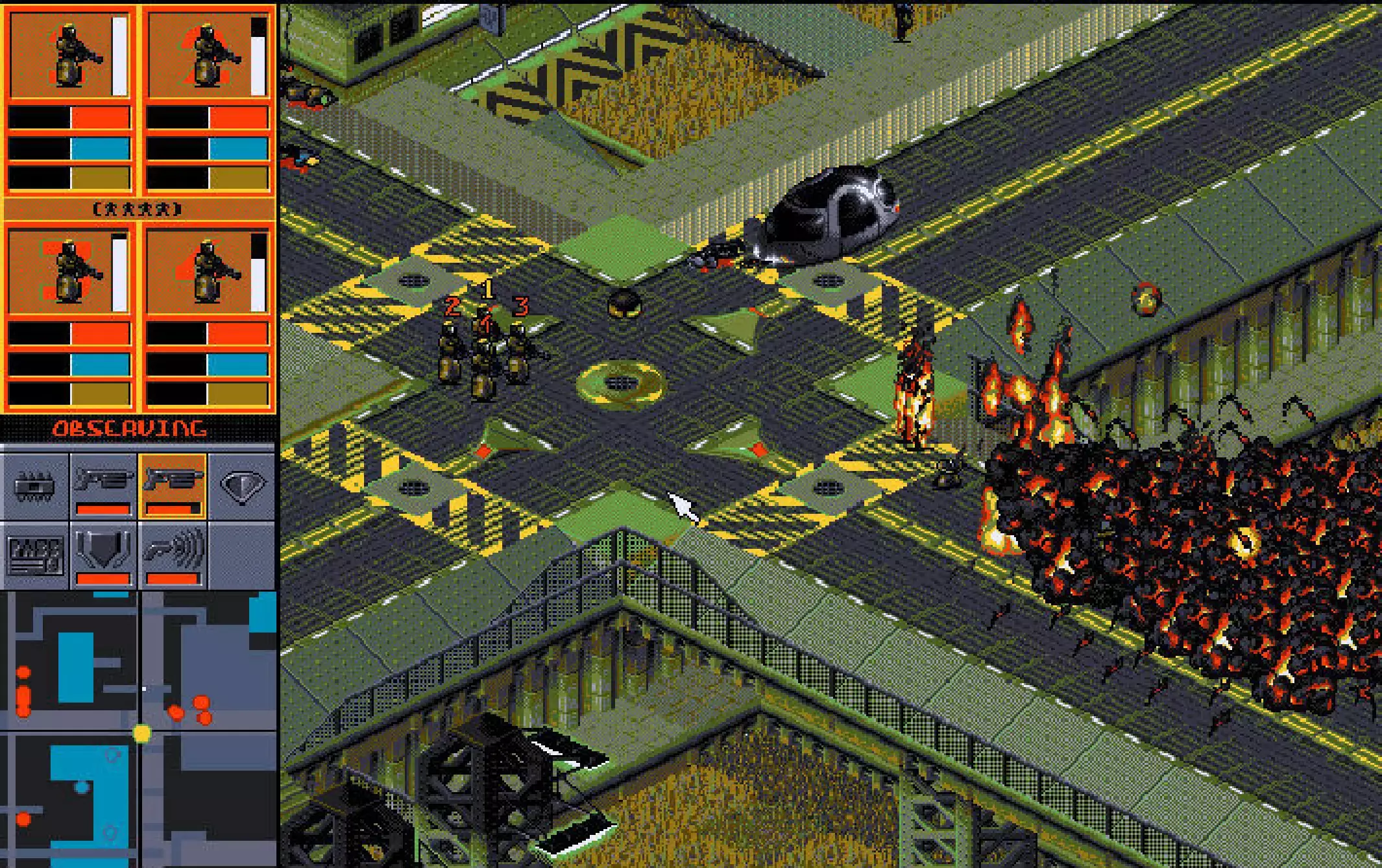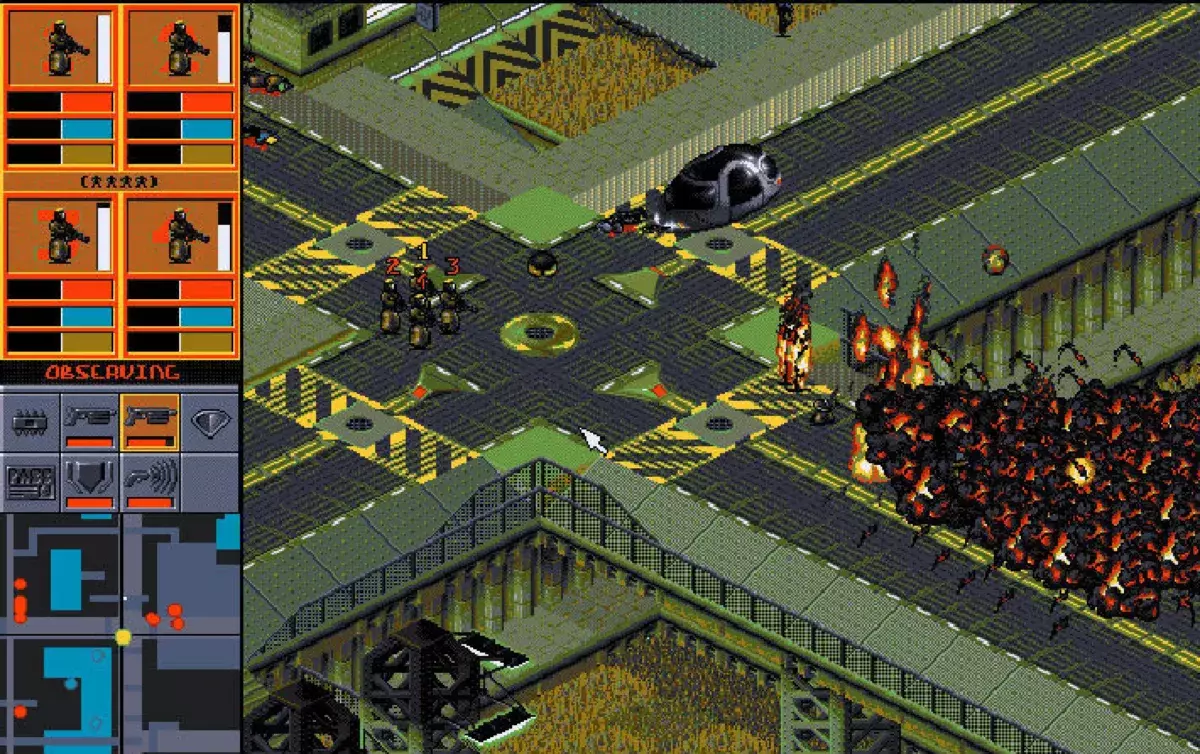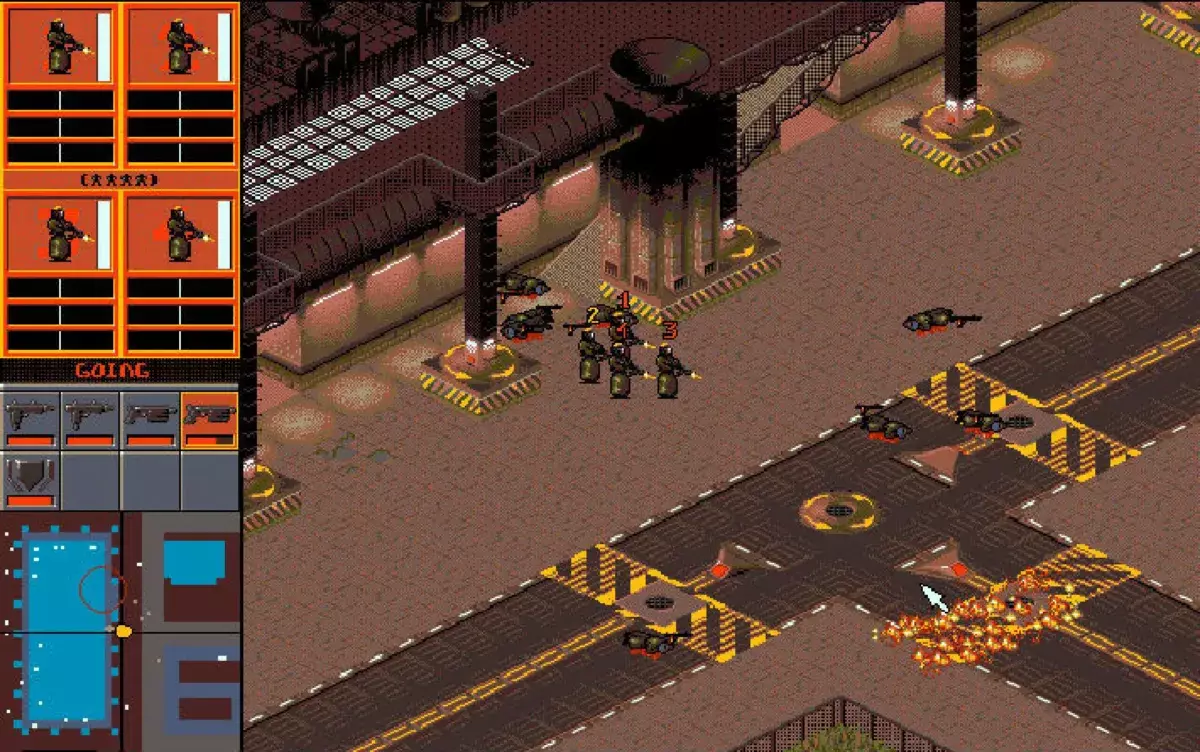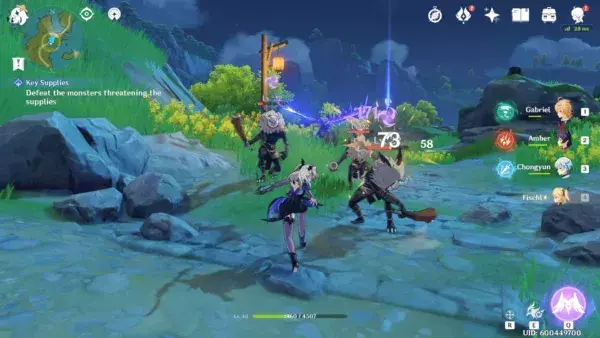
Bullfrog’s dystopian classic Syndicate was released 30 years ago today. We look back at the making of an era-defining classic.
Speaking to ACE Magazine in April 1992, Peter Molyneux was characteristically enthusiastic about his company’s upcoming project, then called BOB. At the time, Molyneux’s Bullfrog Productions was already famous in Amiga and PC circles for the genre-defining god game, Populous. BOB, as described by Molyneux, would be even more ambitious than even that strategy hit. A futuristic management simulator, of sorts, BOB would see rival corporations vie for global domination.
“You start in your office with a map of the world showing all the major companies,” Molyneux told then-journalist Gary Penn. “They start small, and their growth is related to the way you play. We’re aiming to fit in around a hundred countries with all the major cities – hopefully around two or three hundred. Each city’s around four times the size of a Populous map.”
Molyneux added that cities would have functioning road and rail systems, human populations that scurried to and from work, and even a stock market, which players could manipulate from the comfort of their virtual office. Said Molyneux, “You can hire and fire people or pump money into research and development for Neural Chips or new genetically engineered troops. You can even watch television… We’re trying to fit in as many adverts as possible. We’re hoping to fit in about twenty minutes’ worth.”
BOB – which stood for Blue and Orange Bloke – changed considerably on its path to completion. By the time it emerged as Syndicate on 6 June 1993, it bore only a scant resemblance to the game Molyneux breathlessly described only one year earlier. Management elements still remained, but the bulk of the game mostly took place on the streets of those futuristic cities. The goal was still world domination, but this was achieved not through manipulating the stock market, but through wielding gigantic firearms.
Players controlled a squad of up to four armoured cyborgs in a string of bloody missions that took place in cities around the world. Completing missions – which invariably involved murder, kidnapping, and destruction on a grand scale – would cause that territory to fall into the hands of the player’s corporation, increasing their flow of cash, which they could then spend on researching new weapons and upgrades for their cyborgs.
The result was one of the most absorbing games of the 16-bit era, with an almost perfect balance of tactics and gleefully amoral action. Completed missions often left behind a string of bloodied corpses and burned out cars; a troublingly effective device called the Persuadertron – which could be used to turn civilians and cops into mindless drones, following your cyborgs around – only underlined the game’s cold-blooded themes.
That Molyneux’s concept for what would become Syndicate was so vastly different from the finished product might suggest a troubled development cycle. But in subsequent interviews, designer and lead programmer Sean Cooper paints a picture of a small team rapidly iterating through ideas, trying stuff out, and chucking away anything they didn’t find enjoyable. The Persuadertron, for example, emerged from a throwaway conversation that took place in the office one day; Cooper thought the idea of a device that could control people’s brains sounded like a good one, so into the mix it went.
According to Cooper, talking to IncGamers – in a conversation preserved by PC Invasion – Syndicate’s original concept was born from a similarly loose conversation. In 1990, Cooper had recently completed his debut game, the cutesy platformer Flood, and had joined Bullfrog as a permanent member of the team. Down the pub one afternoon, conversation turned to future projects, and the suggestion that, “We wanna gun everyone down – we want to kill loads of people,” according to Cooper.
Despite Molyneux’s lofty descriptions of a cyberpunk business sim, violence was therefore baked into the project from the beginning. Before long, Cooper and his collaborators had come up with an isometric game engine with squads of eight orange and blue figures running around – hence the working title, Blue and Orange Bloke.
The team soon got a multiplayer version of the engine running, which allowed two players to control the rival teams of agents and guide them around the map, shooting at one another. From here, more elements were gradually added in; Cooper recalled that Peter came in one day and said that the cities’ human populations should walk around and go to and from their mindless office jobs.

Credit: Bullfrog/EA.
“I think Peter was the one who said, ‘we should have a population that goes to work’” said Cooper. “All the press releases at the time were describing this great new simulation where people would go to work and then go home. It was a bit of nonsense, but good hype at the time.”
Molyneux would later become infamous for over-promising and under-delivering on his games, but at least a few of the ideas he detailed in that 1992 edition of ACE Magazine were cut simply because they were either too ambitious for the day’s computing technology, or they simply didn’t fit with the increasingly action-oriented focus the team began to pursue. Controls for the cyborgs were originally more complex, but these were gradually whittled down to a handful of keyboard-and-mouse inputs and on-screen sliders; similarly, the number of cyborgs in a team was reduced from eight to four.
Take a look at the development outline published on The Cutting Room Floor, and you’ll see just how rapidly Bullfrog iterated through various ideas. An early version of the game, first glimpsed in a June 1991 issue of Amiga Power, shows off a vastly different isometric world that looks more like the leafy, military environs of EA’s later Jungle Strike. By November that year, the leaves and trees were replaced by tall buildings and acres of concrete. Screenshots printed in a September 1992 issue of Amiga Power show a Blade Runner-inspired look closer to the finished game’s, but a complex UI of buttons are a sign of the indirect, icon-based control system that was later dropped.
Again, Bullfrog’s approach of playing their work-in-progress over a network, and then refining it based on the team’s reactions, was key here. “It was such good fun, modifying the game to suit all the players in the room,” Cooper said. “It made the game what it was, I think.”
It’s ironic, then, that multiplayer didn’t make it to the finished version of Syndicate released in 1993. With the June release date approaching, the team simply failed to get the multiplayer element working reliably enough to pass quality assurance tests. Multiplayer did make it into the expansion pack, Syndicate: American Revolt, though that too was a rushed release (“what a disaster,” was how Cooper summed up the expansion in 2009.)

Credit: Bullfrog/EA.
Still, the Syndicate that emerged in June 1993 was and remains a landmark. Its illusion of a functioning city, doubling as a sandbox in which the player is free to steal cars, engage in firefights with law enforcers, or blow up trains, anticipated the headline-grabbing mayhem of the original Grand Theft Auto by four years. (Interestingly, Gary Penn, who wrote that early feature of Syndicate back when it was called BOB, would later work on GTA as creative manager.)
Syndicate was also a masterclass in moulding grand ideas to technical limitations. Molyneux had a tendency to float off on a balloon of his own dreams and hype, but the rest of his team acted as a tether, grounding the most workable of those ideas and shrugging off the ones too wild or complex to execute. Perhaps unsurprisingly, the notion of a television packed with 20 minutes of adverts fell by the wayside.
Other mechanics, such as winches that allowed cyborgs to zip to city rooftops, were dropped simply because they didn’t add to the fun. Cooper later expressed a certain amount of frustration that some of the more grisly ideas couldn’t fit in the game (“I’d have liked to have seen bodies flying through the air,” he told Edge in 2009), but it’s perhaps arguable that the finished experience was already gory enough.
After all, it was Syndicate’s programmers that zeroed in on the tone that would eventually make it a hit. “The essence of the game was killing people – and that’s it,” said Cooper. “Big guns. Terminators, essentially. If I have to kill everyone, I will.”
It was a William Gibson-esque cyberpunk dystopia taken to its natural, bloody extreme. Later Syndicate games continued or expanded on these ideas, one successfully (Syndicate Wars was a worthy follow-up) another less so (the 2012 reboot, simply named Syndicate, was distinctly forgettable). None of them would exist without the original Syndicate, and the nightmarishly violent world it created.





